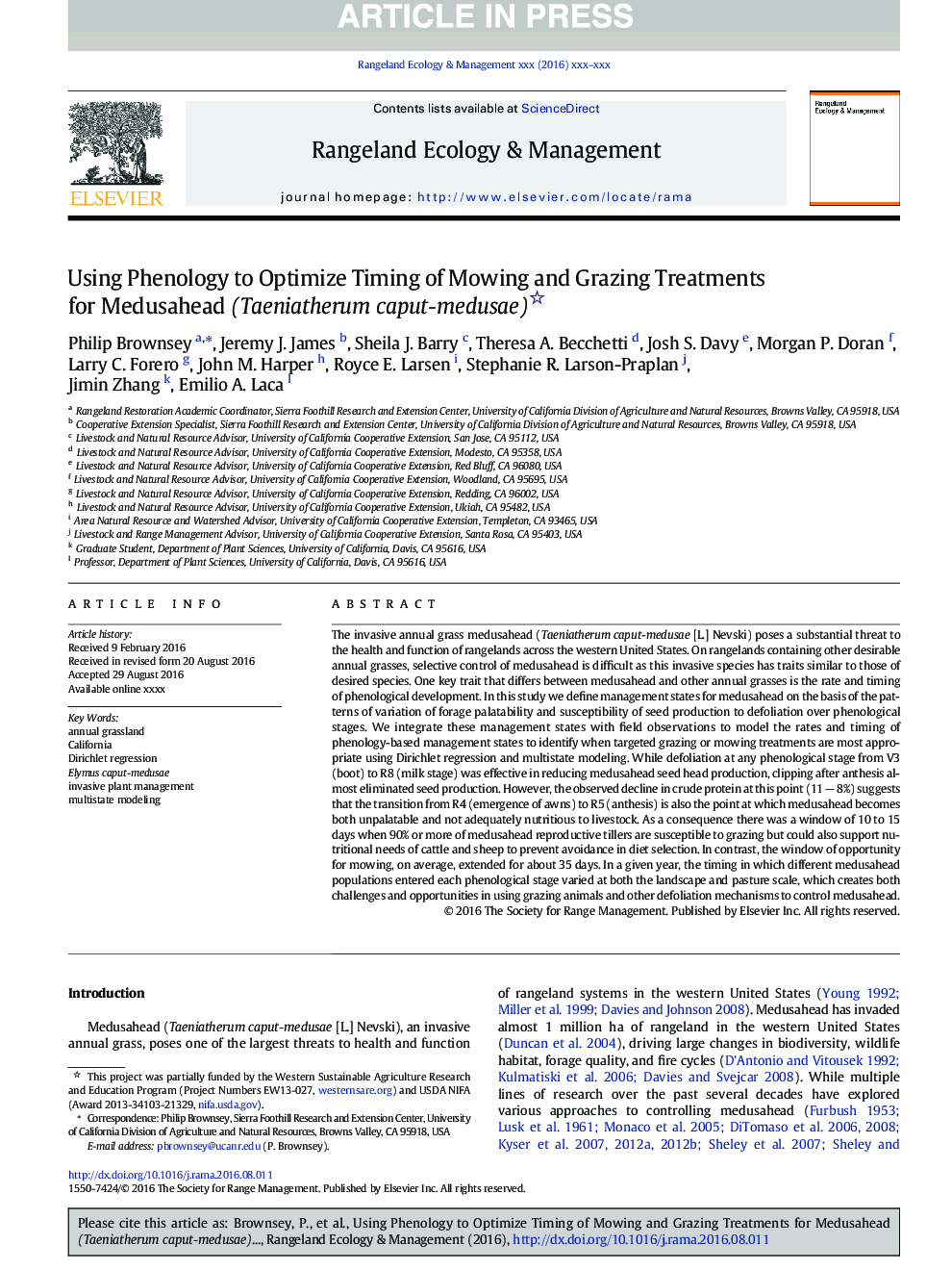| کد مقاله | کد نشریه | سال انتشار | مقاله انگلیسی | نسخه تمام متن |
|---|---|---|---|---|
| 5745244 | 1412390 | 2017 | 9 صفحه PDF | دانلود رایگان |
عنوان انگلیسی مقاله ISI
Using Phenology to Optimize Timing of Mowing and Grazing Treatments for Medusahead (Taeniatherum caput-medusae)
دانلود مقاله + سفارش ترجمه
دانلود مقاله ISI انگلیسی
رایگان برای ایرانیان
کلمات کلیدی
موضوعات مرتبط
علوم زیستی و بیوفناوری
علوم کشاورزی و بیولوژیک
علوم کشاورزی و بیولوژیک (عمومی)
پیش نمایش صفحه اول مقاله

چکیده انگلیسی
The invasive annual grass medusahead (Taeniatherum caput-medusae [L.] Nevski) poses a substantial threat to the health and function of rangelands across the western United States. On rangelands containing other desirable annual grasses, selective control of medusahead is difficult as this invasive species has traits similar to those of desired species. One key trait that differs between medusahead and other annual grasses is the rate and timing of phenological development. In this study we define management states for medusahead on the basis of the patterns of variation of forage palatability and susceptibility of seed production to defoliation over phenological stages. We integrate these management states with field observations to model the rates and timing of phenology-based management states to identify when targeted grazing or mowing treatments are most appropriate using Dirichlet regression and multistate modeling. While defoliation at any phenological stage from V3 (boot) to R8 (milk stage) was effective in reducing medusahead seed head production, clipping after anthesis almost eliminated seed production. However, the observed decline in crude protein at this point (11 â 8%) suggests that the transition from R4 (emergence of awns) to R5 (anthesis) is also the point at which medusahead becomes both unpalatable and not adequately nutritious to livestock. As a consequence there was a window of 10 to 15 days when 90% or more of medusahead reproductive tillers are susceptible to grazing but could also support nutritional needs of cattle and sheep to prevent avoidance in diet selection. In contrast, the window of opportunity for mowing, on average, extended for about 35 days. In a given year, the timing in which different medusahead populations entered each phenological stage varied at both the landscape and pasture scale, which creates both challenges and opportunities in using grazing animals and other defoliation mechanisms to control medusahead.
ناشر
Database: Elsevier - ScienceDirect (ساینس دایرکت)
Journal: Rangeland Ecology & Management - Volume 70, Issue 2, March 2017, Pages 210-218
Journal: Rangeland Ecology & Management - Volume 70, Issue 2, March 2017, Pages 210-218
نویسندگان
Philip Brownsey, Jeremy J. James, Sheila J. Barry, Theresa A. Becchetti, Josh S. Davy, Morgan P. Doran, Larry C. Forero, John M. Harper, Royce E. Larsen, Stephanie R. Larson-Praplan, Jimin Zhang, Emilio A. Laca,